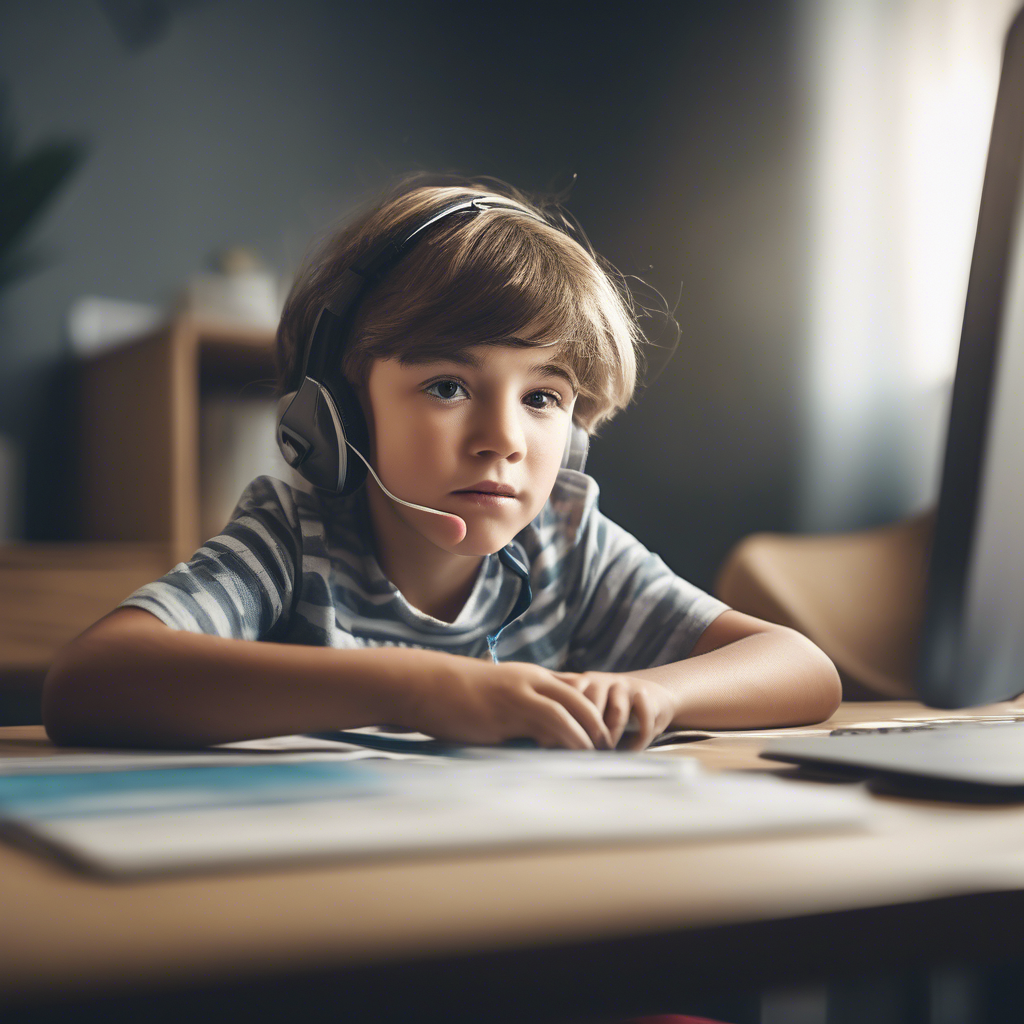Screen Time for Kids: How Much is Too Much?

In today’s digital age, screens are everywhere, from televisions and tablets to smartphones and laptops. While these devices provide a wealth of information and entertainment, they also pose a challenge for parents trying to manage their children’s screen time. The question of “how much is too much?” is more relevant than ever as we navigate the complexities of raising children in a digital world.
The importance of understanding the effects of screen time on kids cannot be overstated. With growing concerns about mental and physical health, it’s crucial for parents and caregivers to establish healthy screen time limits. This article explores the recommended screen time for children, the potential impacts of excessive digital device usage, and offers actionable strategies for managing kids’ screen time effectively.
As you read on, you’ll discover practical tips for promoting independence and fostering a balanced lifestyle for your children. We’ll delve into expert recommendations, provide real-world insights, and address common questions to empower you with the knowledge you need to make informed decisions about your child’s digital habits.
Understanding the Recommended Screen Time for Children
The American Academy of Pediatrics (AAP) provides guidelines that suggest children aged 2 to 5 should have no more than one hour of screen time per day, while older children should have consistent limits that ensure they have ample time for other activities. These recommendations are based on research that shows excessive screen time can lead to issues such as obesity, sleep disturbances, and behavioral problems.
For example, a study from the National Institutes of Health found that children who exceed the recommended screen time limits tend to have lower rates of physical activity and higher rates of obesity. This correlation highlights the importance of balancing screen time with physical activities that promote independence and well-being.
Parents are encouraged to create a family media plan that considers the needs and routines of each child. This plan can include designated screen-free times and activities that encourage social interaction and physical activity. By setting clear expectations and modeling healthy digital device usage, parents can help children develop a balanced relationship with technology.
The Effects of Screen Time on Kids: What the Research Says
Excessive screen time has been linked to various negative outcomes in children, ranging from physical health issues to cognitive and emotional challenges. For instance, prolonged exposure to screens can contribute to eye strain and sleep problems, as the blue light emitted by screens can interfere with the body’s natural sleep-wake cycle.
Physical Health Impacts
Children who spend too much time on screens are less likely to engage in physical activities, which are essential for their growth and development. The World Health Organization emphasizes the need for children to engage in at least 60 minutes of moderate to vigorous physical activity daily to maintain a healthy lifestyle.
Cognitive and Emotional Effects
Research indicates that excessive screen time can also affect children’s cognitive development. A study published in JAMA Pediatrics found that higher screen use in children aged 3 to 5 was associated with lower scores on developmental screening tests. Additionally, social interactions can be hindered as children may become more isolated and less adept at face-to-face communication.
By understanding these potential effects, parents can better manage kids’ screen time and ensure that digital device usage supports rather than hinders their child’s overall development.
Managing Kids’ Screen Time: Tips and Strategies
Implementing healthy screen time limits involves more than just restricting access to devices. It requires a thoughtful approach that considers the individual needs and interests of the child. Here are some strategies to help manage screen time effectively:
Create Engaging Alternatives
One way to reduce screen time is to offer engaging alternatives that promote independence and creativity. Encourage your child to participate in activities such as reading, arts and crafts, or outdoor play. These activities not only provide a break from screens but also support cognitive and physical development.
Set a Good Example
Children often model their behavior after adults, so it’s essential for parents to demonstrate healthy screen habits. Designating tech-free times, such as during meals or family outings, can reinforce the importance of balancing digital and real-world interactions.
Use Technology to Your Advantage
There are numerous apps and tools designed to help parents monitor and limit screen time. Features such as parental controls and screen time tracking can provide insights into your child’s device usage and help enforce boundaries consistently.
To further explore these strategies, consider watching video content that provides visual examples and expert commentary on managing kids’ screen time. Such resources can offer additional insights and practical tips for creating a balanced digital environment at home.

Frequently Asked Questions
What is the recommended screen time for children under 5?
For children aged 2 to 5, the American Academy of Pediatrics recommends no more than one hour of high-quality screen time per day. It’s important to prioritize activities that promote independence and learning, such as interactive play and reading, to support their overall development.
How can I encourage my child to reduce screen time?
Encourage your child to engage in alternative activities that interest them, such as sports, music, or arts and crafts. Setting up a reward system for reduced screen time and increased participation in these activities can also be effective.
Are there any benefits to screen time for kids?
Yes, when used appropriately, screens can be educational and promote learning. Many educational apps and programs are designed to enhance skills such as problem-solving and critical thinking. However, it’s crucial to ensure screen time is balanced with offline activities.
How does screen time affect sleep in children?
Excessive screen time, especially before bed, can interfere with sleep by disrupting melatonin production. Establishing a bedtime routine that includes screen-free time at least an hour before bed can help improve sleep quality.
What are some signs of excessive screen time in children?
Signs may include irritability when not using devices, declining interest in offline activities, and physical symptoms like eye strain or headaches. Monitoring these signs can help parents adjust screen time limits accordingly.
How can I create a family media plan?
A family media plan involves setting clear guidelines for screen usage, including designated tech-free zones and times. Involve your children in the planning process to ensure the rules are realistic and respected by everyone.
Conclusion
In conclusion, managing screen time for kids is a critical aspect of modern parenting. By understanding the recommended screen time for children and the potential effects of excessive digital device usage, parents can establish healthy screen time limits that support their child’s development.
Implementing strategies such as creating engaging alternatives, setting a good example, and utilizing technological tools can help maintain a balanced approach. Remember, the goal is not to eliminate screen time entirely, but to ensure it is part of a well-rounded lifestyle that includes physical activity, social interaction, and activities that promote independence.
For those looking to deepen their understanding, consider exploring complementary topics such as “The Impact of Technology on Child Development,” “Activities to Promote Independence in Kids,” and “Balancing Digital and Offline Learning Experiences.”




